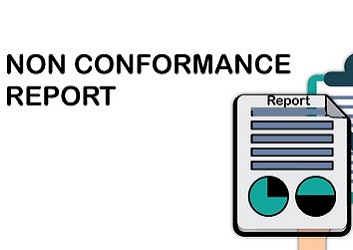
Imagine embarking on an adventurous voyage. Just like a trustworthy compass directs towards the right path, the seven principles of Total Quality Management (TQM) guide businesses toward their ultimate goal - Operational Excellence. So let's uncover the intriguing mystery of these principles that breathe life into the heart of quality management, deeply rooted in the ISO 9001 standard.
Principle 1: Customer Focus
The North Star: Guiding Light of Business
In a bustling marketplace, it's easy to lose sight of what truly matters - the customer. Just like the North Star, customers guide businesses, their needs shaping the very products and services we offer. Aligning with the ISO 9001 standard, we are reminded that understanding and addressing customer needs is not a one-off task, but a continuous process, a guiding light that shapes our business direction.
Imagine a day in your customer's shoes. What do they seek? What do they expect? Understanding this perspective can help businesses deliver more than just products; they deliver satisfaction, experiences, and trust. Feedback isn't merely a comment; it's a window into your customers' minds. Complaints aren't problems; they're opportunities wrapped in a challenge, waiting to be unwrapped.
- Turn feedback into an opportunity for improvement.
- Transform complaints into learning experiences.
- Commit to keeping your customers satisfied.
Because in the grand scheme of things, the customer is your North Star, guiding you to success.
Principle 2: Leadership
The Steadfast Skipper: Steering Towards Success
Every ship needs a captain, and in the realm of business, that role is filled by effective leadership. Much like a skipper confidently navigating turbulent seas, a leader guides their team towards the organization's objectives, ensuring everyone's paddling in the same direction. It's a principle deeply embedded in the ISO 9001 standard.
Leadership isn't about standing on a pedestal; it's about embedding oneself within the team, becoming a part of the machinery. Leaders create an internal environment that encourages mutual trust and full participation of the crew. They weave a tapestry of goals, ensuring every team member sees the larger picture.
- Clarify the direction, inspire the journey.
- Foster an environment of participation and collaboration.
- Keep the team's sight on the ultimate goal.
Because when you are steering the ship, every wave, every turn, and every decision counts. A steadfast skipper ensures the team not just reaches their destination, but enjoys the journey along the way.
Principle 3: Engagement of People
The Trustworthy Crew: A Symphony of Skills
Consider your organization as a ship sailing towards the island of success. Your employees are the crew that makes the journey possible. Their skill and involvement are not just desirable but essential. This principle is not merely an idea but a cornerstone of the ISO 9001 standard.
Engage your team members in the decision-making process, understand their viewpoint, and value their contributions. When employees see their ideas bearing fruit, they are more likely to engage, contribute, and take ownership.
- Involve them, inspire them.
- Stir creativity, push boundaries.
- Embrace their input, improve your output.
When you look at your organization, don't just see a group of people. See a crew, a team, a symphony of skills steering your ship towards success. After all, a melody sounds sweetest when all the notes are in harmony.
Principle 4: Process Approach
The Charted Course: The Art of Process
Imagine walking through a maze with no map or direction, daunting, isn't it? Now, visualize your business as a vast network of processes. Navigating through this network can feel like navigating a maze without a map. Here is where the ISO 9001 standard steps in, equipping businesses with the map – a process approach.
The idea here is that managing related activities and resources as a connected process can lead to better efficiency and outcomes that are more desirable. It's about understanding how the individual processes interconnect and how altering one process might impact another.
- See the big picture, understand the interconnection.
- Aim for consistency, reduce variability.
- Enhance efficiency, drive productivity.
Don't view your operations as a tangled web of individual threads. Instead, see it as a well-charted course, a network of interlinked processes. Every step you take, every process you improve, brings you closer to your destination: Quality Excellence.
Principle 5: Improvement
The Continuous Voyage: Embracing Change
Visualize your organization as a living entity, a being that grows, learns, adapts, and improves. Just like humans learn from their experiences, organizations too must adapt and improve based on their journey. The ISO 9001 standard embodies this principle, encouraging businesses to view improvement not as an option, but as an intrinsic part of their journey.
Improvement isn't about colossal changes; it's about continuous, incremental enhancements. It's about learning from your setbacks, turning your weaknesses into strengths, and nurturing a culture that views every challenge as an opportunity for improvement.
- Don't fear change, embrace it.
- Learn from setbacks, turn them into comebacks.
- Stay committed to improvement, for it is the key to growth.
Remember, an organization is not defined by its success alone, but by its commitment to constant improvement. Because when it comes to quality, the journey is the destination.
Principle 6: Evidence-Based Decision Making
The Measured Decisions: Embracing Rationality
In the intense arena of business, each decision carries significant weight. Making decisions based on hunches and gut feelings might have its charm, but in the quest for quality, we need something more solid. The ISO 9001 standard champions the principle of evidence-based decision making, favoring rationality over guesswork.
Making decisions grounded in evidence is all about using carefully reviewed data and information to guide your choices. It's about replacing guesswork with facts, assumptions with evidence, and uncertainty with confidence.
- Make data your ally, not an adversary.
- Replace guesswork with informed decisions.
- Turn information into insights, insights into actions.
In the quest for quality, every decision must be measured, weighed, and justified. Absolutely! By harnessing the power of data, we can unlock the ability to make timely and informed decisions.
Principle 7: Relationship Management
The Bonded Voyage: The Power of Partnerships
Indeed, having the right companions can make any journey smoother and more enjoyable. In the journey of quality management, the partners are stakeholders - suppliers, partners, employees, customers, and society at large. The ISO 9001 standard emphasizes the importance of managing relationships to ensure sustained success.
Relationship management isn't about fostering partnerships; it's about nurturing them, caring for them, and making them stronger over time. It's about creating an environment where every stakeholder feels valued, appreciated, and part of the journey.
- Understand and balance stakeholder interests.
- Nurture your partnerships, for they are the pillars of your success.
- Harmonize efforts and enhance shared value.
Remember, you're not sailing alone. You have a team of partners, each contributing to your journey. Nurture these relationships, for they hold the key to sustained success and mutual growth.





